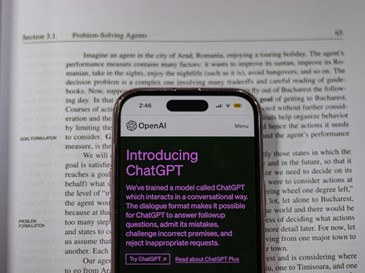Artificial Intelligence has certainly gained attention in recent years and shows no sign of attracting any less as multiple applications and uses for the digital marvel increase! The question is, how well does AI do in information retrieval?
According to the Google Company’s CEO, Sundar Pichai, the newest innovation in AI search engines is known as “Bard.” Bard raises the bar for intelligent information retrieval by condensing the information searched for by users into simplified summaries, as well as requiring less computing power to do so.
Below, David Ohnstad of Minnesota reviews Google’s new Generative AI search, known as Bard, and examines its features to understand what it brings to the table of digital aid.
More on Google’s AI
Generative AI is a way to describe a set of computer algorithms, known as artificial intelligence. These specific types of AI synthesize creativity; they build content like images, audio, simulations, and video sequences, and they can even write code. For this reason, they are a part of what is known as “machine learning.”
Generative AI has many uses, like making new designs for products or writing out content. ChatGPT is one of the most widely known AI programs available, because it can generate answers to questions by distilling information it gains from the worldwide web.
Simply put, what makes this AI special among all previous forms of machine learning is that it will do more than just notice an image and classify what that image is. It can also create it’s own image when asked to do so.
Because of ChatGPT’s success and popularity, many companies are taking advantage of the breakthroughs in technology that have lead to the creation of Generative AI search engines.
Google’s New Generative AI Search: Bard
Google has just recently released their “chatbot,” named Bard, to a handful of testers in both Britain and the United States. But, how exactly does this chatbot work?
Bard is an artificial intelligence experiment designed to converse digitally with a user. It is based on the Language Model for Dialogue Applications, otherwise known as “LAMDA.” LAMDA was developed in 2021 by Google to create conversational dialogue.
The reason this was so important at the time is that before LAMDA, it was difficult to converse with chatbot AI’s because they could not always keep up with the context of a human’s continued dialogue. With LAMDA, it is easier for humans and AI/machine learning to communicate in an ongoing dialogue through synthesized human conversation.
Bard’s whole purpose is to work alongside the worldwide-use of Google’s search engine. It is made to collaborate with humans collaboratively by assisting in the creation of content. This can be through writing essays or emails, contributing to brainstorming, and overall distilling lots of information into one relevant summary.

How Google’s New Generative AI Search Raises the Bar
One of the most unfortunate things about any AI at this stage of the technology is that chatbots represent a significant drain on a computer’s power. This is because the chatbot has to handle huge amounts of data, not only in receiving queries and processing the context of a conversation, but in compiling answers to those queries.
Bard, however, only uses LAMDA in a limited capacity. This cuts down, significantly, on computer power usage, and it allows Bard to take responsibility for many more users at the same time. By contrast, other chatbots running on AI have decreased in efficiency when too many users employ them at once.
The main difference between Bard and competitors is that while it produces refined search results, its whole model is made to feel natural and, to put it simply, more human, in it’s responses. This comes in handy when files are sometimes forged or accused of plagiarism.
In Conclusion
Google’s new Generative AI search, Bard, is raising the bar for intelligent information retrieval by doing more with less computation power needs. It is expected to be released to the public in the next few years, setting an example of reliable information in a natural, conversational package.
